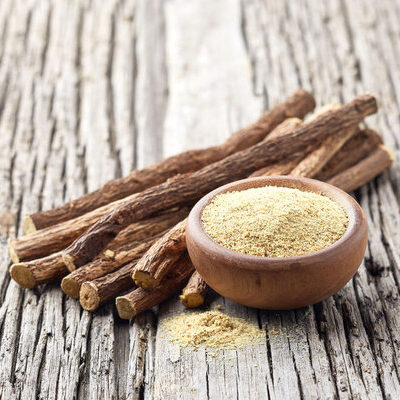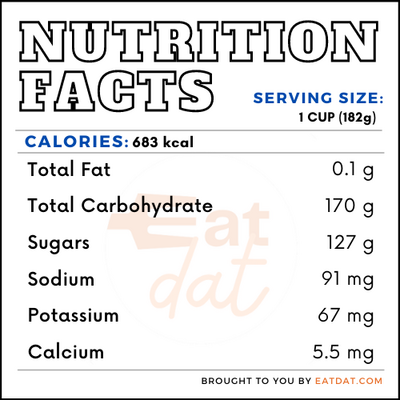
Licorice
What is Licorice?
Licorice is a root belonging to the Glycyrrhiza glabra family, which is used as a flavoring agent in parts of Europe and Asia. This sweet and aromatic root is also utilized for flavoring tobacco and confections like taffy. It has long been used in herbalism and traditional medicine in different parts of the world, and is still used for some medicinal purposes.
- In the past, the dried root was sold as a sweet in itself, though that has largely been replaced by licorice-flavored confections.
- With a pungent odor that is similar to camphor and a flavor that encompasses extreme sweetness with some bitterness, licorice is often an acquired taste.
The top 6 most popular sweet brands are:
- Jelly Belly
- Twizzlers
- YumEarth
- Venco
- Wiley Wallaby
- Joris Belgian
Origin of licorice
The earliest evidence of use is from China around 2300 BC, when Emperor Shennong had the root recorded as a magic plant that rejuvenated old men. The root was also popular in ancient India, ancient Egypt, and Assyria. Licorice root was found in Tutankhamun’s tomb dating back to 1350 BC. It was used extensively in Ayurvedic medicine in India, as well.
The name itself is derived from two Greek words combining ‘sweet’ and ‘root’, and the root was used extensively as a medicine in ancient Greece and Rome. By the Renaissance period, this food was commonly used to flavor sponge cakes and an array of sweets. Today, the popularity of the root has decreased, though it remains widespread in certain areas.
Nutrition
This has been traditionally used for thousands of years as a medicine in different cultures. The root has a wide range of health promoting properties, such as antibacterial, anti‐inflammatory, antiviral, antioxidant, and antidiabetic activities. It is a rich source of proteins, amino acids, polysaccharides, flavonoids, and carbohydrates. Also, it contains calcium, phosphorus, sodium, potassium, iron, magnesium, silicon, selenium, manganese, zinc, and copper. The sweet taste of this food is due to the glycyrrhizin, a triterpenoid saponin that is 50 times sweeter than sucrose.
One cup of bite sized licorice (182g) contains:

However, consumption of licorice on a daily basis may lead to health conditions, such as hyperaldosteronism, hypokalemia, and muscle weakness. Creatine phosphokinase (CPK) may be elevated in cases with rhabdomyolysis, which may be complicated with acute tubular necrosis. This food may also cause high blood pressure, plasma renin, and aldosterone levels, as well as a reduction in the conversion of cortisol to cortisone. Therefore, it’s recommended to consume this food in moderation.
Commercial production
Many licorice products sold in the US may actually not contain the root. Instead, anise oil, which has a similar taste and odor, is used. The world’s main producers of this food are India, Iran, Italy, Afghanistan, the People’s Republic of China, Pakistan, Iraq, Azerbaijan, Uzbekistan, Turkmenistan, and Turkey.
Licorice recipes
This root offers a unique taste that can enhance the flavors in foods and drinks. Here are a few recipes:
- Liquorice Panna Cotta
- Licorice Pudding
- Black Licorice Chocolate Brownies
- Chocolate Licorice Loaf Cake
- Salt Liquorice Caramel
- Black Liquorice and Almond Chocolate Chip Cookies
- Black Liquorice Ice Cream
- Date Balls
- Licorice Tea
- Squash and Liquorice Soup
- Hua Gua Pickles
- Liquorice Macarons
- Liquorice Hot Chocolate
- Lemon, Licorice, Caper Risotto
FDA regulations
The FDA regulates the supply and sale of this food. They define licorice root as the dried and ground rhizome and root portions of Glycyrrhiza glabra or other species of Glycyrrhiza. Its extract is defined as the portion of the licorice root that is, after maceration, extracted by boiling water and purified by filtration and by treatment with acids and ethyl alcohol. This may be sold in liquid, paste, or powder format.
References
Licorice Root, National Center for Complementary and Integrative Health, U.S. Department of Health and Human Services, https://www.nccih.nih.gov/health/licorice-root
Fiore, Cristina et al. “A history of the therapeutic use of liquorice in Europe.” Journal of ethnopharmacology vol. 99,3 (2005): 317-24. doi:10.1016/j.jep.2005.04.015, https://www.ncbi.nlm.nih.gov/pmc/articles/PMC7125727/
Pastorino, Giulia et al. “Liquorice (Glycyrrhiza glabra): A phytochemical and pharmacological review.” Phytotherapy research : PTR vol. 32,12 (2018): 2323-2339. doi:10.1002/ptr.6178, https://www.ncbi.nlm.nih.gov/pmc/articles/PMC7167772/
